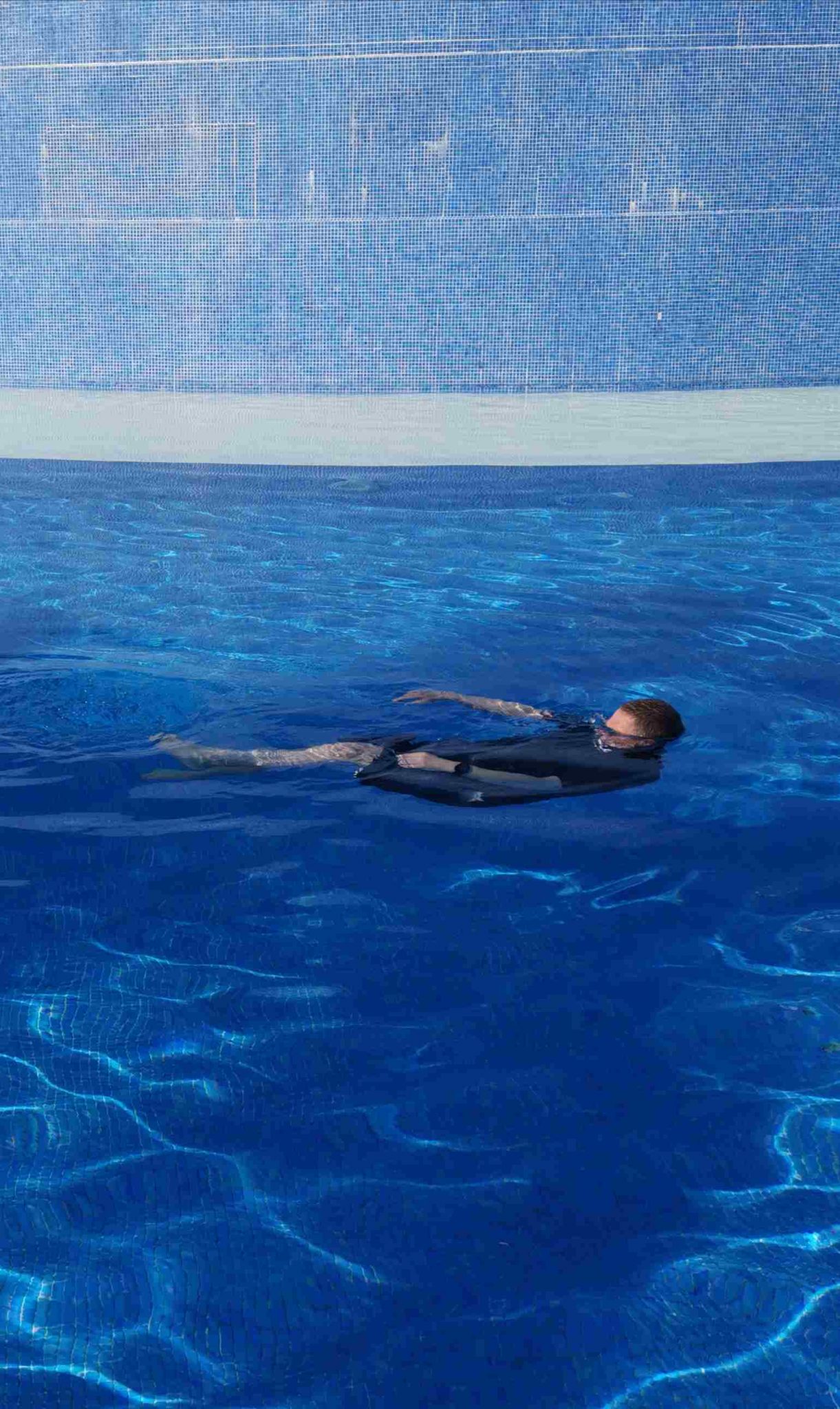Swim: to move through water by moving the body or parts of the body. Cambridge dictionary.
I’m at the Hotel Costa Calero in Lanzarote again, and the large empty pool is the blank canvas I came for.
By conditioning and habit, I think of well executed strokes as real swimming, and of messing around underwater with a relaxed neck as not really swimming. I’m starting to think it’s the other way round.
I’ve always defined swimming as propelling oneself through the water by moving arms and legs. But nature’s swimmers don’t have arms. The Cambridge definition is spot on.
Keeping the hands out in front and doing things with them will often create tension in the shoulders. It isn’t a problem that natural swimmers – seals, dolphins, fish, squids, labradors – have. So I like to let my arms, and legs, dangle.
Another thing I’ve been enjoying recently is swimming on my back with my head underwater, looking at my flippering feet. I find this better for my head, neck, back relationship than looking at the ceiling/ sky with my face out of the water.
I was working with Coslyn last week, helping her to trust the water to support her so she could regain her feet calmly. This skill had eluded her over the course of many lessons with other teachers. At the end of her course of 6 lessons with Cheryl and me, she felt justifiably proud of herself, for floating and moving through the water without fear.
Trying to learn movements with the arms and legs often impedes the forward momentum we’re hoping to create. Because I wanted Coslyn to focus on non-doing, receiving the support of the water, I didn’t introduce limb movements, which might have distracted her from this. But I found that, with my hands on her neck, encouraging her spine to lengthen, she kind of pulsed through the water for quite a distance, just by using her weight.
For the last few years I’ve been fond of inviting people to ‘learn not to swim’, meaning stop worrying about swimming strokes, getting things right. Perhaps the most natural swimming for humans is just moving about, underwater, like a thing that swims, without strokes, sometimes even without arms. Maybe to swim is not to swim lengths. So learn to swim, but like a thing that swims.
When I tell myself to swim, and start to perform the strokes, I’m immediately restricted by what I know, by patterns I’ve learned with arms and legs, centred around coming up for frequent breaths. If on the other hand I just play with movement, underwater, without trying to get anywhere, breaststroke and crawl type movements do start to happen. They’re sort of already there, reflex.
But giving up the idea of swimming, deciding not to swim the strokes, seems to result in something more natural. I think I might be learning to swim.


